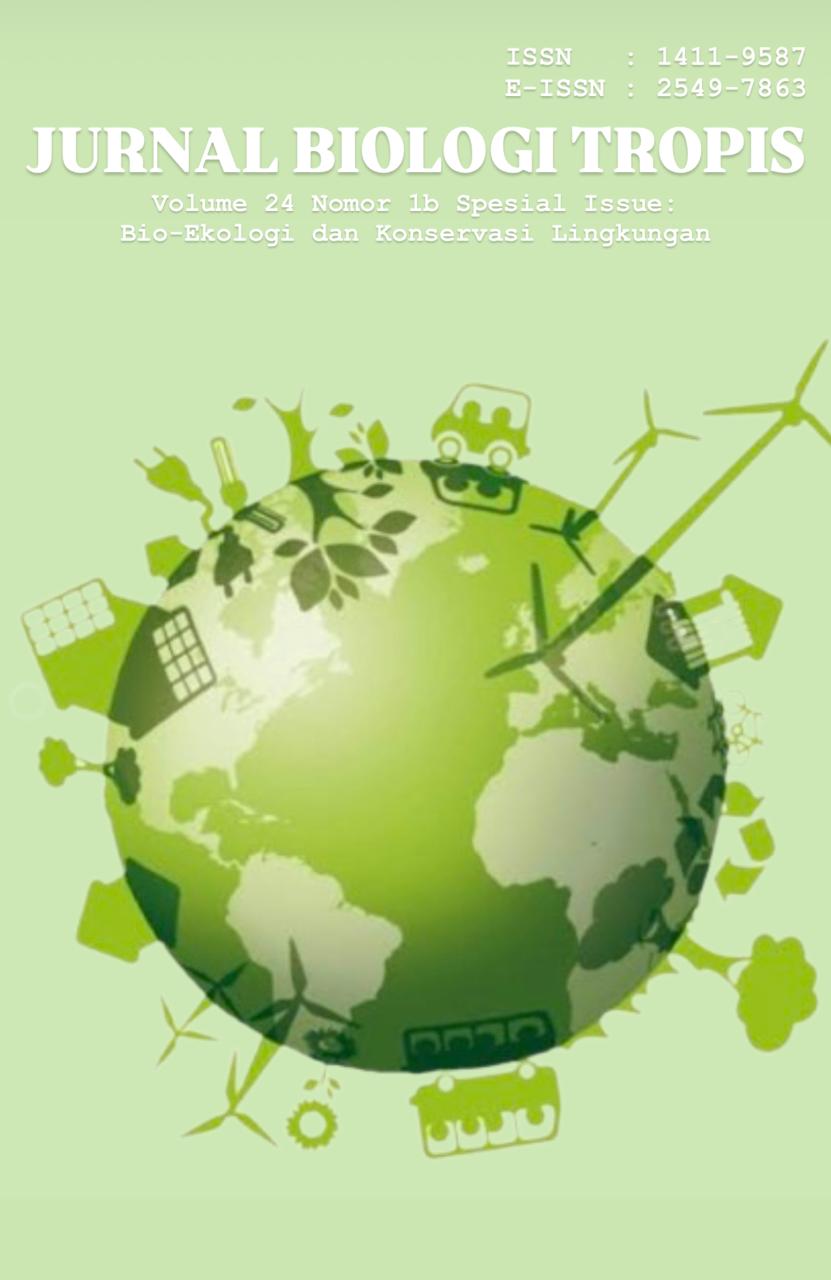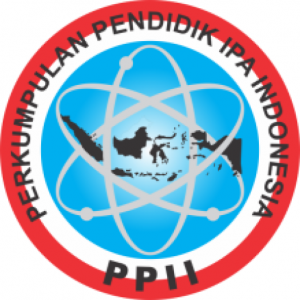The Effect of Mycorrhiza on Sorghum Plants in Dryland Areas
Authors
Uun Ilwati , A. A. K Sudharmawan , I Made SudanthaDOI:
10.29303/jbt.v24i2b.8087Published:
2024-12-30Issue:
Vol. 24 No. 2b (2024): Special IssueKeywords:
dry land, mycorrhiza, sorghum plant.Articles
Downloads
How to Cite
Downloads
Metrics
Abstract
Sorghum is one of the cereal crops that can grow well in dry land. However, dry land has limitations in terms of soil nutrients and its structure, which does not retain water for long. The productivity of sorghum in dry land is still low, at 2-3 tons/ha, which is far from its potential yield of 6-7 tons/ha. This happens because the soil lacks essential nutrients. Along with the application of both organic and synthetic fertilizers, one possible approach is to incorporate mycorrhiza into the soil. This article seeks to explore how mycorrhiza influences sorghum plants in arid conditions. This article serves as a review of existing literature concerning sorghum and the influence of mycorrhiza on its growth. From the findings and discussions presented, it can be inferred that mycorrhiza affects the uptake of nutrients, growth, and yield of sorghum by enhancing the availability and absorption of nutrients in the soil, boosting antioxidant activity, increasing photosynthesis, and improving the plants' resilience to environmental stress. Furthermore, mycorrhiza also affects the improvement of the plant's defense system by increasing dry matter content, keeping leaf stomata open, and helping the accumulation of substances including substances like soluble sugars, proline, glycine betaine, organic acids, potassium, and calcium within the plant, which helps in the uptake of water. The application of mycorrhiza to sorghum plants in dry land is expected to support the sustainable increase in plant productivity, reduce the use of chemical fertilizers, and promote a more environmentally friendly farming system.
References
Afdhalul, F., Rita, H., & Syafruddin (2023). Effect of Mycorrhizal Types and Sorghum (Shorgum bicolor L.) Varieties on Growth and Yield. Jurnal Ilmiah Mahasiswa Pertanian, 2(3), 503–508.
Anggarini, A., Tohari, & Kastono, D. (2014). PENGARUH MIKORIZA TERHADAP PERTUMBUHAN DAN HASIL SORGUM MANIS (Sorghum bicolor L. Moench) PADA TUNGGUL PERTAMA DAN KEDUA. 3(3), 63–77.
Apliza, D., Ma’shum, M., Suwardji, S., & Wargadalam, V. J. (2020). Pemberian Pupuk Silikat dan Pupuk Kandang Terhadap Pertumbuhan, Kadar Brix, dan Hasil Tanaman Sorgum (Sorghum bicolor (L.) Moench). Jurnal Penelitian Pendidikan IPA, 6(1), 16–24. https://doi.org/10.29303/jppipa.v6i1.229
Basuki, B. (2017). Pertumbuhan Dan Hasil Empat Genotipe Sorgum Manis Dengan Perlakuan Dosis Mikoriza Arbuskuler Growth and Yields of Four Sweet Sorghum Genotypes tested …. 11–16. http://eprints.upnyk.ac.id/13749/
BBSDLP. (2011). Road Map Penelitian dan Pengembangan Lahan Kering.
Diagne, N., Ngom, M., Djighaly, P. I., Fall, D., Hocher, V., & Svistoonoff, S. (2020). Roles of arbuscular mycorrhizal fungi on plant growth and performance: importance in biotic and abiotic stressed regulation. Diversity, 12(10), 1–25. https://doi.org/10.3390/d12100370
Frey, S. D. (2019). Mycorrhizal Fungi as Mediators of Soil Organic Matter Dynamics. Annual Review of Ecology, Evolution, and Systematics, 50, 237–259. https://doi.org/10.1146/annurev-ecolsys-110617-062331
Hapsani, A., & Basri, H. (2018). Kajian Peranan Mikoriza Dalam Bidang Pertanian. Agrica Ekstensia, 12(2), 74–78.
Harsono, P., Handayanta, E., Hartanto, R., & ... (2021). Effects of manure types on the growth and yield of sweet sorghum (Sorghum bicolor L.) in dryland. … Series: Earth and …. https://doi.org/10.1088/1755-1315/807/4/042067
Hasibuan, D., Marliah, A., & . S. (2024). Pengaruh Pemberian Mikoriza dan NPK Terhadap Pertumbuhan dan Hasil Tanaman Sorgum (Sorghum bicolor (L.) Moench). Jurnal Ilmiah Mahasiswa Pertanian, 9(1), 80–89. https://doi.org/10.17969/jimfp.v9i1.28024
Hawari, H., Suwardji, S., & Idris, H. (2021). The Role of Biochar and Combination of Inorganic Fertilizers and Biological Fertilizers in Increasing Yield and Levels of Brix Sorghum (Sorghum bicolor (L.) Moench) in Dry Land. Jurnal Penelitian Pendidikan IPA, 7(3), 437. https://doi.org/10.29303/jppipa.v7i3.729
Khan, Y., Shah, S., & Tian, H. (2022). The Roles of Arbuscular Mycorrhizal Fungi in Influencing Plant Nutrients, Photosynthesis, and Metabolites of Cereal Crops—A Review. Agronomy, 12(9). https://doi.org/10.3390/agronomy12092191
Masrahi, A. S., Alasmari, A., Shahin, M. G., Qumsani, A. T., Oraby, H. F., & Awad-Allah, M. M. A. (2023). Role of Arbuscular Mycorrhizal Fungi and Phosphate Solubilizing Bacteria in Improving Yield, Yield Components, and Nutrients Uptake of Barley under Salinity Soil. Agriculture (Switzerland), 13(3). https://doi.org/10.3390/agriculture13030537
McGuire, S. (2015). FAO, IFAD, and WFP. The State of Food Insecurity in the World 2015: Meeting the 2015 International Hunger Targets: Taking Stock of Uneven Progress. Rome: FAO, 2015. In Advances in Nutrition (Vol. 6, Issue 5). https://doi.org/10.3945/an.115.009936
Muis, R., Ghulamahdi, M., Melati, M., & Mansur, I. (n.d.). Diversity of Arbuscular Mycorrhiza Fungi from trapping using Different Host Plants. International Journal of Sciences: Basic and Applied Research, 4531, 158–169. http://gssrr.org/index.php?journal=JournalOfBasicAndApplied
Nakmee, P. S., Techapinyawat, S., & Ngamprasit, S. (2016). Comparative potentials of native arbuscular mycorrhizal fungi to improve nutrient uptake and biomass of Sorghum bicolor Linn. Agriculture and Natural Resources, 50(3), 173–178. https://doi.org/10.1016/j.anres.2016.06.004
Qadri, L., Nurahmi, E., & Ichsan, C. N. (2024). Pengaruh Amandemen Tanah, Pemupukan NPK, Penyemprotan Eco enzyme terhadap Pertumbuhan dan Hasil Sorgum (Sorghum bicolor (L.) Moench.) pada Tanah Ultisol Judul Artikel Ilmiah. Jurnal Ilmiah Mahasiswa Pertanian, 9(1), 11–20. https://doi.org/10.17969/jimfp.v9i1.27897
Sukmawati, S., Adnyana, I. M., & Suprapta, D. N. (2020). The Compatibility of Arbuscular Mycorrhizal Fungi with Corn and Sorghum Plant in the Dry Land of Central Lombok. International Journal of …. https://www.neliti.com/publications/330165/the-compatibility-of-arbuscular-mycorrhizal-fungi-with-corn-and-sorghum-plant-in
Sutrisna, N., Sunandar, N., & Zubair, A. (2013). Uji adaptasi beberapa varietas sorgum (Sorghum bicolor L.) pada lahan kering di kabupaten Ciamis, Jawa Barat. Jurnal Lahan Suboptimal, 2(2), 137–143. www.jlsuboptimal.unsri.ac.id
Tani, E., Chronopoulou, E. G., Labrou, N. E., Sarri, E., Goufa, M., Vaharidi, X., Tornesaki, A., Psychogiou, M., Bebeli, P. J., & Abraham, E. M. (2019). Growth, Physiological, Biochemical, and Transcriptional Responses to Drought Stress in Seedlings of Medicago sativa L., Medicago arborea L. And their hybrid (Alborea). Agronomy, 9(1). https://doi.org/10.3390/agronomy9010038
Thirkell, T. J., Pastok, D., & Field, K. J. (2020). Carbon for nutrient exchange between arbuscular mycorrhizal fungi and wheat varies according to cultivar and changes in atmospheric carbon dioxide concentration. Global Change Biology, 26(3), 1725–1738. https://doi.org/10.1111/gcb.14851
Zhang, L., Xu, M., Liu, Y., Zhang, F., Hodge, A., & Feng, G. (2016). Carbon and phosphorus exchange may enable cooperation between an arbuscular mycorrhizal fungus and a phosphate-solubilizing bacterium. New Phytologist, 210(3), 1022–1032. https://doi.org/10.1111/nph.13838
Zubaidi, A., Suwardji, & Wangiyana, W. (2021). Pengaruh Pemberian Pupuk Npk Dan Fitosan Terhadap Kadar Brix Batang Dan Hasil Tanaman Sorgum (Sorghum bicolor L. Moench ) Di Tanah Pasiran Lahan Kering Kabupaten Lombok Utara, NTB. Jurnal Pertanian Agros, 23(1), 157–166.
License
Copyright (c) 2024 Uun Ilwati, A. A. K Sudharmawan, I Made Sudantha

This work is licensed under a Creative Commons Attribution 4.0 International License.

Jurnal Biologi Tropis is licensed under a Creative Commons Attribution 4.0 International License.
The copyright of the received article shall be assigned to the author as the owner of the paper. The intended copyright includes the right to publish the article in various forms (including reprints). The journal maintains the publishing rights to the published articles.
Authors are permitted to disseminate published articles by sharing the link/DOI of the article at the journal. Authors are allowed to use their articles for any legal purposes deemed necessary without written permission from the journal with an acknowledgment of initial publication to this journal.


























